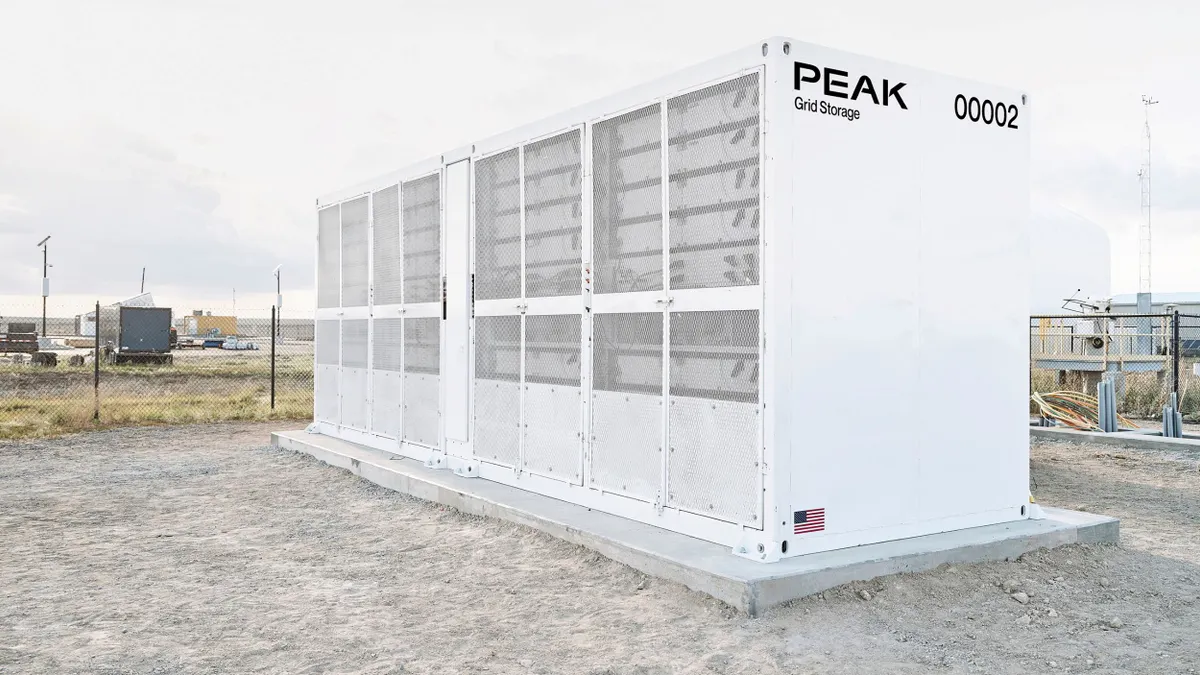Fights over net metering policies are showing no signs of slowing down in the second quarter of this year. According to the latest quarterly report from North Carolina Clean Energy Technology Center, there are 42 proceedings in 25 states plus the District of Columbia to increase fixed charges or minimum bills on residential solar customers.
And 24 states are considering or enacted changes to the net metering policy in Q2 as well. But perhaps one of the most notable is how many states are formally examining the value of distributed generation or the costs and benefits of net metering: 17.
But while utilities and solar interests are duking it out over how to compensate solar customers for the excess energy sent to the grid, a handful of states are revisiting decisions on successor tariffs for net metering.
“The most noticeable new trend is state regulators and policymakers revisiting NEM successor tariff decisions,” said Autumn Proudlove, manager of policy research at North Carolina Clean Energy Technology Center and the report’s lead author. “Regulators and policymakers set out to create enduring, forward-looking policies but they are seeing impacts from the new tariffs and discovering the need for significant changes,” she added.
A recent example of this is Nevada. Following a year of backlash against a controversial decision to gut net metering compensation, lawmakers passed a bill restoring the rates close to its originial retail rate, and gave consumers the right to self-generate.
Still utilities are pushing for fixed charges and other rate designs to essentially neutralize these policies, even as these requests are rejected.
“Our takeaway is that, consistent with past quarters, the requests are not letting up but, also consistent with past quarters, regulators are not especially receptive to the requests,” Proudlove said.
If anything, these numbers show that net metering debates will continue even past successor tariffs. But in order to craft and implement a good successor to current net metering policies, DER valuations and cost/benefit analysis could be key to obtaining regulatory approval.
The road to successor tariffs is paved with data
The top five policy developments in the second quarter included orders for new valuation or cost/benefit studies for net metering.
For instance, Nevada’s decision to restore the net metering credit close to 95% of its retail rate also called for a study of the policy.
New Hampshire is another state that ordered a study for the value of distributed energy resources as well as four pilot programs. It also docked part of the credit, pending the conclusions of the study.
Melissa Birchard, Attorney for DER advocate Conservation Law, called the ruling “a partial win for the state” because the it sets New Hampshire “on a strong long-term path.”
And Montana was another state with a nascent market studying the costs and benefits of its current net metering study. It also allows the Montana PSC to use the studies as a justification for establishing a separate customer-generator rate class during the utility’s rate case.
Andrew Valainis, executive director of the Montana Renewable Energy Association, is more skeptical of the study, saying NorthWestern Energy’s cost-benefit analysis will be “the next iteration of a conversation around net metering that has been going on in Montana for years, with little to no progress.”
The utility’s “history of hostility toward net metering" and recent commission decisions on solar under the Public Utility Regulatory Policy Act is worrying, Valainis added. But advocates are “encouraged by the PSC's discussion and decision regarding the minimum information requirements” that will guide the study.
Proudlove acknowledged the concerns, saying the next step for Montana will likely be a successor tariff for new rooftop solar customers. But the study could be used to justify “a higher fixed charge, a lower demand charge, and a lower credit rate or a lower retail electricity rate.”
And North Carolina’s recent solar compromise bill made broad changes to state laws related to solar, including opening up solar leasing and establishing community solar. The bill also said utilities could only file revised net metering rates after a cost-benefits analysis of customer-sited generation.
Peter Ledford, general counsel for the North Carolina Sustainable Energy Association, said the solar policy changes were not perfect but “a step forward.” He expects many provisions “to be re-examined.”
The cost-benefit analysis of the net metering policy makes no changes to it, but crucially, specifies that the commission “must look at the benefits of solar as well as the costs,” said Rep. John Szoka, the bill’s lead sponsor.
However, Maine’s Gov. LePage vetoed a bill that would have restored the state’s net metering credit to the retail and directed regulators to conduct two extensive studies. One was a cost-benefit analysis of net metering in an adjudicatory proceeding, and the other would have required the commission to make recommendations to transition from net metering to time-varying or market-based rates or other rate design options. It also required Maine to integrate DERs.
Proudlove expects these debates over successor tariffs to continue. These discussions are located are in diverse geographies with varied levels of installed solar capacity and different solar economics, but one overriding generalization applies, she said. That is uncertainty “about their actual costs and benefits and long-term impacts.”
The objective is value-based compensation but inconsistent valuation and cost-benefit study findings have left regulators and policymakers in doubt about the completeness of their data, she added.
“The impacts of the implemented successor tariffs and the results of this new round of valuation and pilot studies are expected to provide that data,” Proudlove said.
Ongoing studies in New York and California could offer important lessons for these sucessfor tariff debates.
“It would be smart for other states to see the outcomes of those studies before making changes to their NEM tariffs,” Proudlove said.
Hawaii is another state that produced an interim successor tariff, and is now engaged finding a more permanent solution. While its geographical isolation and high DER penetration make it something of an outlier compared with the other 49 states and D.C., the state does offer some lessons for states.
“They are considering a limited or smart export rather than no export or all export at avoided cost.”
Fixed charges and demand charges
It appears, despite the shift to more sophisticated rate making, utilities are still requesting fixed charges and boosting minimum bills on residential customers. In the second quarter, there were 40 requests from utilities to boost monthly fixed charges and two to raise minimum bills. Regulators granted at least 19% of those requests, according to the report.
Despite the low number of requests that are approved, why are utilities still pushing fixed charges?
Jim Lazar, senior advisor to the Regulatory Assistance Project said fixed charges offer utilities “more revenue stability than any other type of rate.”
Regulators tend to deny the requests “because the purpose of regulation is to enforce on monopolies the pricing disciple that markets enforce on competitors,” Lazar said. “Regulators are taking their role seriously when they enforce market discipline on electric monopolies.”
A prime example of this phenomenon is a recent decision from Minnesota regulators denying Xcel Energy’s fixed charge request.
An administrative law judge (ALJ) for the Minnesota Public Utilities Commission “rejected the claim that the record demonstrated the economic efficiency of any given monthly customer charge,” the decision reported.
The commission acknowledged the utility’s challenges in recovering costs but, like the ALJ, “the Commission lacks the information that would let it achieve perfect economic efficiency,” it ruled. And it “is not persuaded that any party has demonstrated the need to alter the monthly customer charges.”
Mandatory demand charges was another theme in recent proposals. This quarter, 11 utilities had pending proposals for residential demand charges or other charges on rooftop solar customers. And so far, there have been 22 proposals since the Center began tracking them in 2014.
At least 19 of those proposals came from investor-owned utilities, but none of have been approved. The rest of those proposals came from municipal and public-owned utilities, which have seen some support, but they do not go through the same regulatory process as IOUs. Arizona’s Salt River Project, for instance, levied demand charges two years ago on its solar customers. SolarCity, now owned by Tesla, claimed they reduced new applications in SRP’s service territory by 95%.
Demand charges have recently gained traction in utility circles as a possible solution for compensating residential solar customers for excess energy sent to the grid. But many of the proposals have met significant resistance and, if approved, are usually only voluntary, such as the case with Arizona Public Service’s recent settlement with solar interests.
“Regulators seem concerned about a lack of evidence and data that demand charges can be effective with residential customers,” she said. While demand charge pilot programs have been approved, they are voluntary and part of a broader agreement between stakeholders and utilities.
“Even though many consumer advocates and solar advocates strongly oppose them,” she added. “Some see the proposals as bargaining chips.”
Because they have been regularly rejected, policymakers have begun asking why regulators are so uneasy with mandatory residential demand charges and what is needed to get regulatory approval, Proudlove said.
“The first answer may be that residential customers don’t know how to use them or don’t have the smart meter technology to use them,” she said. “The second answer is that voluntary pilot programs may give regulators the data they need.”
The big three
But the report can boil down into three key points: Regulators and policymakers are revising net metering successor tariffs; they are showing increased interest in studying the value of distributed generation and there is momentum behind broad cost/benefit analysis of DERs.
Most states have long had a net metering policy in place without making any major change to it, Proudlove said. And valuation studies have been done for some time but weren’t used in net metering decisions.
Recently, though, the outcomes of successor tariff implementations have shown decision makers the importance of real data and the usefulness of cost-benefit analysis, she said. “There seems to be a move from NEM 2.0 to NEM 3.0 and the next compensation structure.





















